Main Entrance
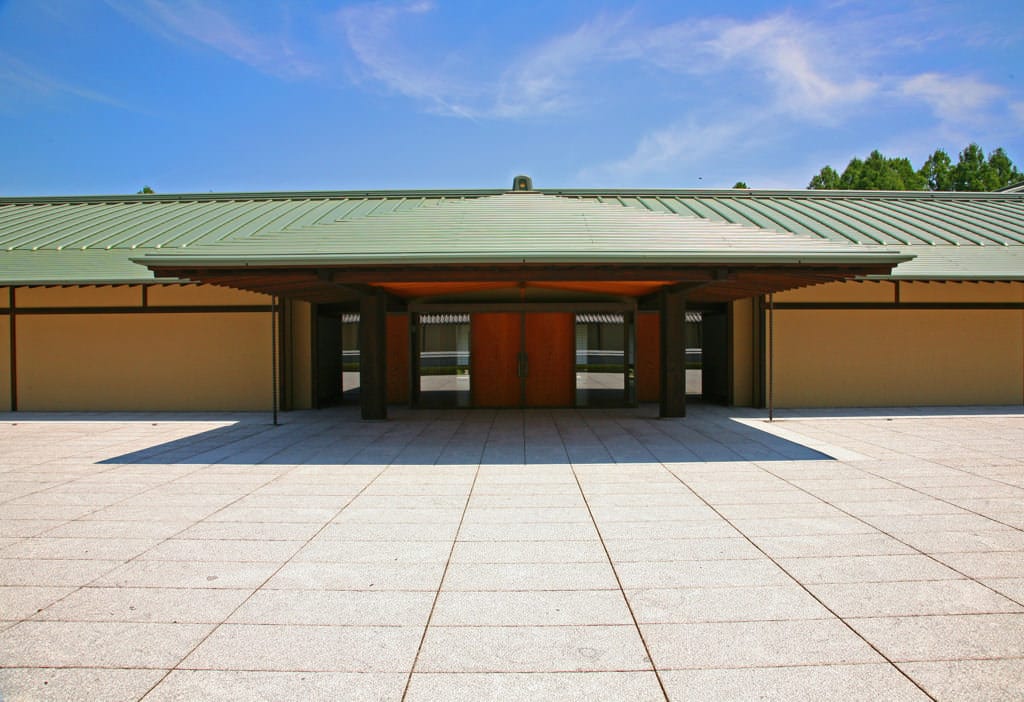
The Welcoming Face of Kyoto Guest House
Guests from overseas are greeted with a distinctly Japanese ambience.
Highlights
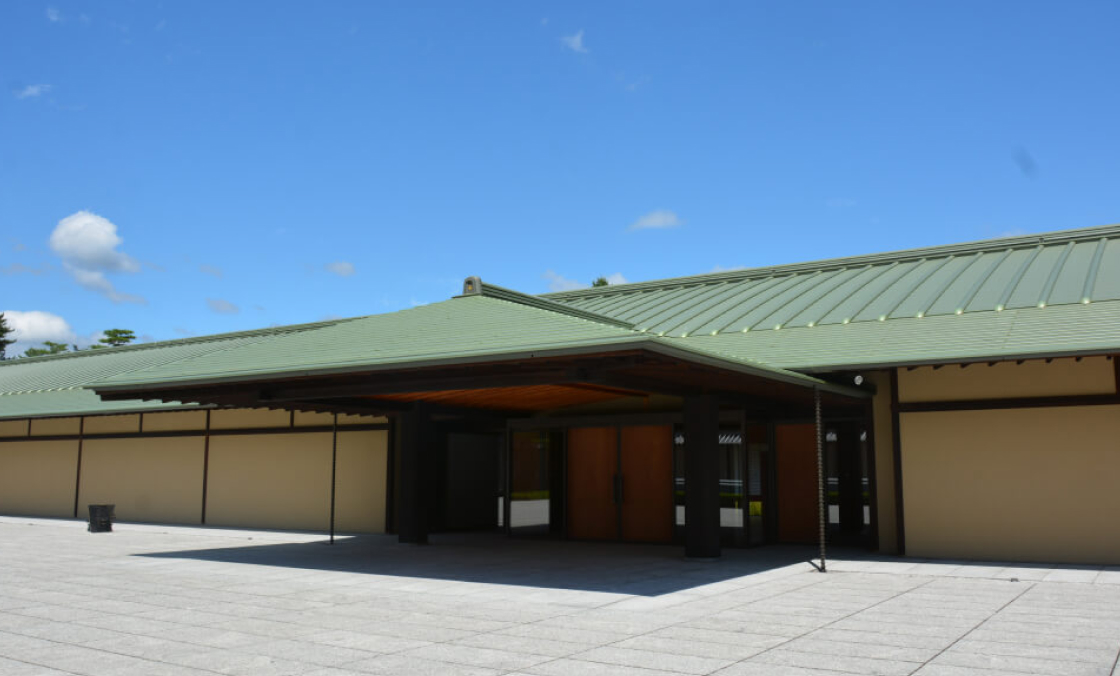
Created in Contemporary Japanese Style
Contemporary Japanese style fuses the panache and beauty rooted in Japan's long architectural tradition with modern construction methods. While the building utilizes steel, concrete, and state-of-the-art technology, the interior makes ample use of wood and paper to create a truly Japanese space.
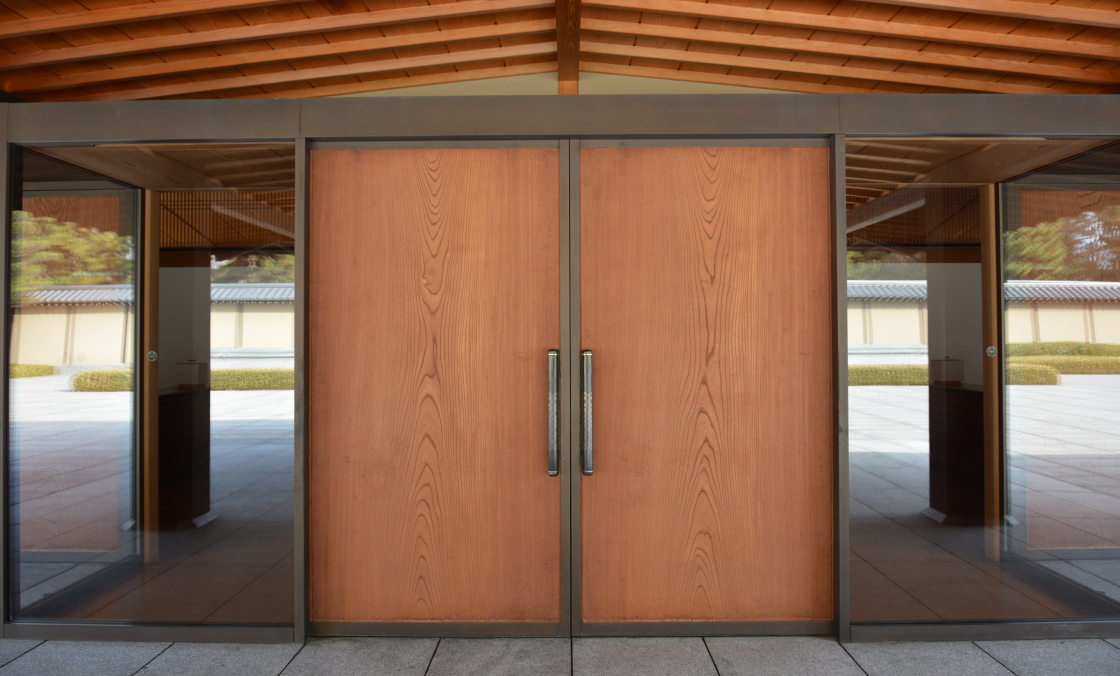
A Door Hewn from a 700-year-old Japanese Elm
The main entrance doors are made of solid wood, taken from a 700-year-old zelkova serrata tree—also known as Japanese elm—from Fukui Prefecture. The bronze handles are ornamented with understated cloisonné with a motif of kumihimo braided cords.
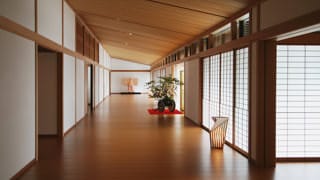
Wood and Paper
The floorboards are Japanese elm, treated for scratch-resistance. There are no curtains in the facility. Instead, the windows are fitted inside with shoji screens.
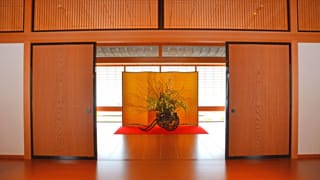
Ikebana, a Symbol of Welcome to Honored Guests
A floral arrangement is created whenever dignitaries are being hosted. Flower vases, folding screen, and flowers are chosen in accordance with the visitor's tastes and the characteristics of the country.
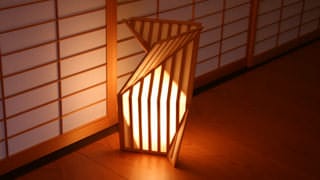
Lamps Inspired by Origami
The lamps—called andon—are made of Mino paper using Kyoto's traditional joinery technique, constructed entirely without nails or metal parts.

![Kyoto State Guest House [SP]](https://www.geihinkan.go.jp/wp-content/themes/geihinkan/assets/img/kyoto/common/toplogo_kyoto_sp_bk_en.png)
![Kyoto State Guest House [PC]](https://www.geihinkan.go.jp/wp-content/themes/geihinkan/assets/img/kyoto/common/toplogo_kyoto_bk_en.png)